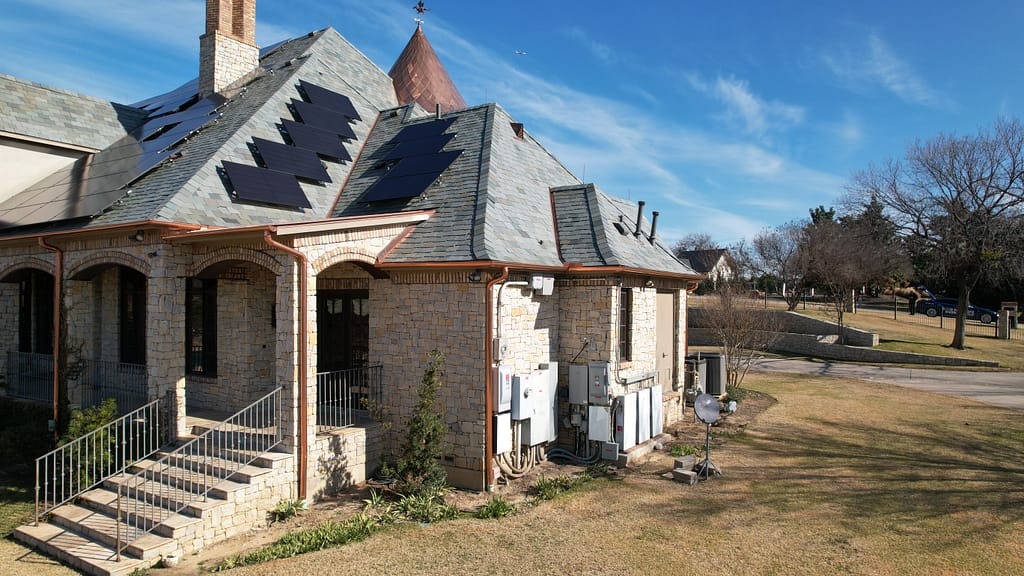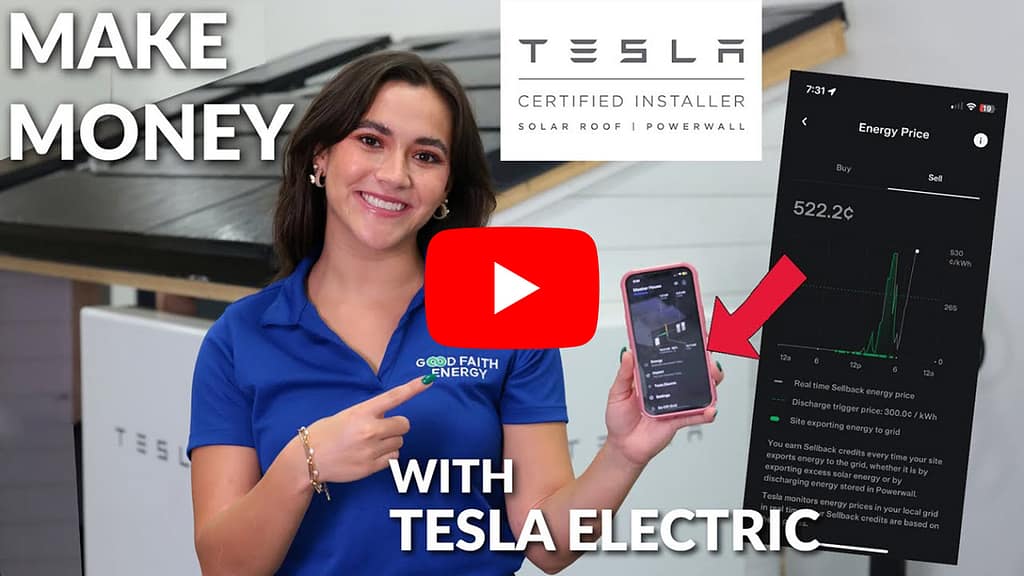In Texas, with its deregulated energy market and growing emphasis on renewable energy, homeowners have unique opportunities to maximize the benefits of their solar systems. Let’s explore what happens to the excess solar energy produced and the best way to use it.
Table of contents
The Basics: What Happens to Excess Solar Power?

When your solar panels generate more electricity than your home consumes, that extra energy doesn’t go to waste. Instead, in most grid-tied solar systems, it’s automatically exported to the local electricity grid. This process, called net metering, allows homeowners to earn credits for the unused electricity they provide, which can offset future energy costs.
The Year-Round Benefits of Solar Credits
For most solar homeowners, the credits earned during sunny months (spring through fall) build up enough to cover energy needs in winter when solar production is lower. It’s like having a “solar savings account” to help you balance seasonal energy fluctuations.
- In Summer, your panels can generate more energy than you use, creating a surplus.
- In Winter, shorter days and reduced sunlight mean you might rely on the credits accumulated during summer to cover your electricity bill.
Note: Net metering policies vary by state and utility provider. Some states offer dollar-for-dollar credits at retail rates, while others may credit you at a wholesale rate. Check your state’s policy through resources like the Database of State Incentives for Renewables & Efficiency (DSIRE).
What Can You Do With Your Solar Power?

1. Feeding Excess Energy Back to the Grid (Net Metering in Texas)
Texas does not have a statewide net metering policy like some other states, but many utility companies and retail electric providers (REPs) offer their own programs for handling excess solar energy. Under these programs, Excess solar energy produced is sent back to the grid, and homeowners are compensated either with bill credits or a per-kilowatt-hour rate.
It’s important to note that the compensation rate and policies vary between providers, so it’s essential to research your specific electric company’s solar buyback plan or explore switching to one that offers favorable terms.
Think of net metering as a two-way street:
- Solar power flows in: During the day, your solar panels generate electricity. That energy powers your home first—your appliances, electronics, heating, and cooling needs.
- Excess energy flows out: When your panels produce more electricity than your home needs (especially on sunny summer days), the surplus flows back into the grid. Your utility meter tracks this exported energy.
- Credits for you: The utility company applies credits to your account for every kilowatt-hour (kWh) sent to the grid. Later, when the sun isn’t shining—like at night or during cloudy winter days—you can use those credits to draw power from the grid without additional costs.
2. Storing Excess Energy in Batteries
One of the most flexible options for managing excess solar energy is to store it in a battery backup system. Solar batteries, such as the Tesla Powerwall or LG Chem batteries, allow you to save surplus energy generated during the day for use during the night or cloudy periods. This can be especially helpful in Texas, where weather conditions can change rapidly, and grid outages caused by storms or heat waves are not uncommon.
Additionally, battery systems can provide a layer of energy independence and resiliency, ensuring your home remains powered during outages. Many Texas homeowners choose battery systems to prepare for extreme weather events like hail or winter storms, which have caused significant disruptions in recent years. Incentives for battery storage are becoming more accessible, with federal tax credits and annual utility-specific rebates available.
3. Participating in Virtual Power Plants (VPPs)
Virtual Power Plants are emerging as a cutting-edge solution in Texas’s deregulated energy market. In a VPP, solar-powered homes with battery storage can collectively provide energy to the grid during periods of high demand. Homeowners who participate in a VPP are compensated for the excess solar energy produced that they contribute, creating an additional revenue stream while supporting grid stability.
For example, companies like Enphase Energy and Tesla Energy are actively piloting VPP programs in parts of Texas, partnering with utilities to create smarter and more resilient grids. These programs are still in development, but they represent an exciting opportunity for solar homeowners in the Lone Star State.
4. Selling Excess Solar Power Back To The Grid
Some energy companies allow you to sell excess solar power directly to the grid at competitive rates. For example, plans like Reliant Energy’s Solar Payback allow customers to receive credits or payments for every kilowatt-hour exported. Oftentimes during peak energy times, you can sell back your energy at a higher rate per kilowatt than you purchased it, if you did get energy from the grid, and make a profit.
5. Using Excess Energy for Home Automation
Another innovative way to utilize excess solar energy is by integrating it into a home automation system. In Texas, where many households rely on energy-intensive systems like air conditioning, water heating, and pool pumps, you can program these devices to run during peak solar production hours. Advanced energy management systems, like those offered by SPAN or Enphase, allow homeowners to maximize self-consumption by directing excess energy to specific appliances or tasks.
Why Texas is Unique
Texas’s energy market gives homeowners the flexibility to choose how they handle their solar power. Since most of Texas is in a deregulated energy area, many homeowners can choose where and who they get their energy from. Whether you prefer to save energy for emergencies, support your community, or profit from grid contributions, there’s an option tailored to your needs. As solar adoption continues to grow in Texas, policies and programs are expected to evolve, offering even more opportunities for energy independence and financial savings.
To learn more about how your utility handles excess solar energy or explore solar-friendly REPs in Texas, check out the Public Utility Commission of Texas (PUCT) or consult with a member of our sales team familiar with state policies.
Maximizing Your Solar Savings

To further lower your energy costs, consider making your home more energy-efficient. Simple steps like sealing air leaks, upgrading insulation, or installing energy-efficient appliances can reduce your overall consumption and allow you to bank even more solar credits.
Conclusion: Solar Energy is a Win-Win
When your solar panels produce more electricity than you use, the benefits go beyond your home. Whether you’re earning bill credits through net metering, storing energy in batteries, or helping power your community, your investment in solar energy is making a positive impact. It’s clean, renewable, and sustainable.